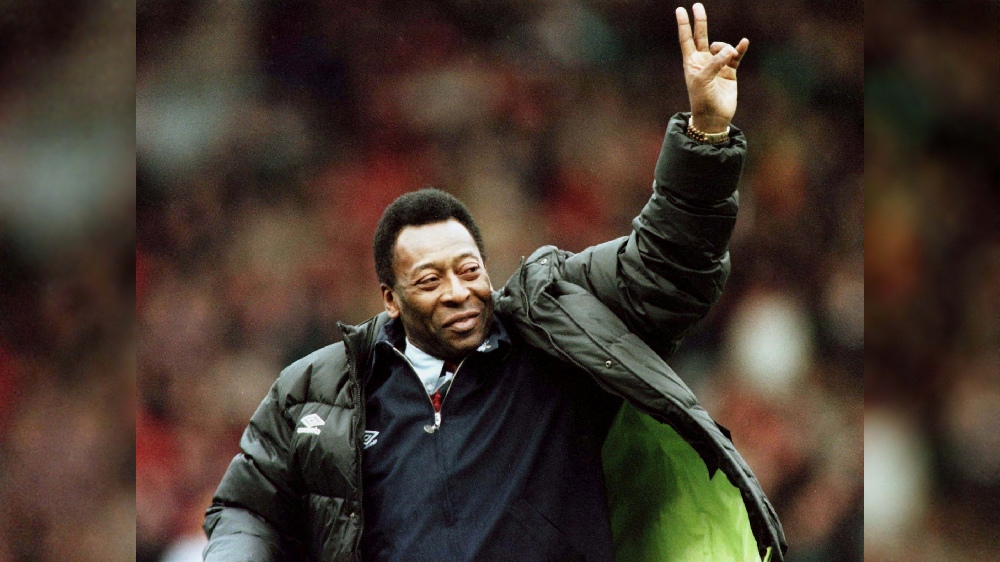Rest in pride, No 10
The Brazilian magician’s rags to riches story is one for the ages. Having risen from abject poverty, growing up in the favelas of Tres Coracoes – his family could not even afford a football – Pele emerged as one of the greatest athletes in history.

NEW DELHI: There are barely a handful of sportspersons, who have earned the title the Greatest of all Time, or G.O.A.T. Edson Arantes do Nascimento, or Pele, was one such icon. The legendary Brazilian soccer star, who is referred to as one of the first star footballers, breathed his last this week. With his passing, it truly feels like a giant tree has fallen, leaving the world of football, bereft of a guiding light.
The Brazilian magician’s rags to riches story is one for the ages. Having risen from abject poverty, growing up in the favelas of Tres Coracoes – his family could not even afford a football – Pele emerged as one of the greatest athletes in history. Having scored a record 1,281 goals, he is the only player ever to win three World Cup titles (1958, 1962, and 1970). Nicknamed The King, Pele was emblematic of the sublime, artistic cadence of the game, called ‘samba football’ in his home country.
In his heyday, Brazil grew so possessive of Pele, that he was declared as a national treasure at the age of 20, to deter other football clubs from poaching him. The kinetic quality of his on-field prowess was offset by his early retirement from the international area, when he threw in the towel at age 30. While many speculated that his early withdrawal from global soccer could be zeroed in on his dissatisfaction with the military junta in charge of Brazil back in the day, the exact reasons for his retirement remain unknown.
Although the star of Selecao was admired across the length and breadth of the planet, he was also vilified, thanks to his refusal to address crucial political issues such as racism, which was rampant back then. This is in stark contrast to the approach adopted by Muhammad Ali, who remained a lifelong advocate of equal rights for members of the African-American community.
Pele is even known to have prompted a 48-hour ceasefire between two warring outfits during the Nigerian Civil War in the 1960s. The factions put aside their hostilities so they could watch Pele play in an exhibition game in Lagos.
The bearer of jersey No 10, who helped soccer bag the sobriquet of the ‘beautiful game’, had a remarkable connection with India too. He made an appearance in Calcutta back in 1977 when Mohun Bagan pulled off a spectacular coup of sorts. He played an instrumental part in the club hosting him and the New York Cosmos during its tour of Asia in 1977. The Brazilian had dribbled in that match in Eden Gardens for half an hour, at a time when he wasn’t really on top of his gameplay. However, the crowd of 80,000 people that day witnessed how Pele’s presence magically turned around the fortunes of Mohun Bagan. The club went on to rediscover its inimitable touch and scored victories after a series of upsets against East Bengal, which happened to be the other titan in Indian club football.
The manner in which the two-fronted loyalties of Indian soccer fans has been bifurcated has a lot to do with Pele, and that other sure-footed sensation from Argentina, the late No 10 – Diego Armando Maradona. During World Cup season, when people walk through the streets in Thrissur or Tollygunge, bathed in a sea of azure blue stripes, sunshine yellow, and knolly greens, a nod goes out to the champs, who inspired that loyalty. The world of football is undoubtedly poorer by the passing of Pele. But there’s a great gig up in the sky, now that the two No 10s are together.
Visit news.dtnext.in to explore our interactive epaper!
Download the DT Next app for more exciting features!
Click here for iOS
Click here for Android



